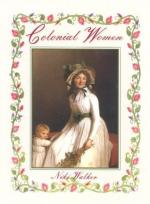|
This section contains 593 words (approx. 2 pages at 300 words per page) |

|
Seditious Libel.
Freedom of the press as a legal protection did not exist in the colonial period. Under English and colonial law, to criticize the government in a way that lessened the public's esteem of it was to commit the crime of seditious libel. Under this practice the truth of the criticisms was unimportant; all that mattered was that they undermined public confidence in the government. Judges generally made the decision whether or not printed material was seditious.
Critics.
In the 1600s several noted figures argued for greater freedom in printing, among them the poet John Milton and the philosopher John Locke. The most significant criticisms of the doctrine of seditious libel for colonial America were found in Cato's Letters (1733), written by the Englishmen John Trenchard and Thomas Gordon. These letters included defenses of the freedom of speech and criticisms of existing...
|
This section contains 593 words (approx. 2 pages at 300 words per page) |

|




